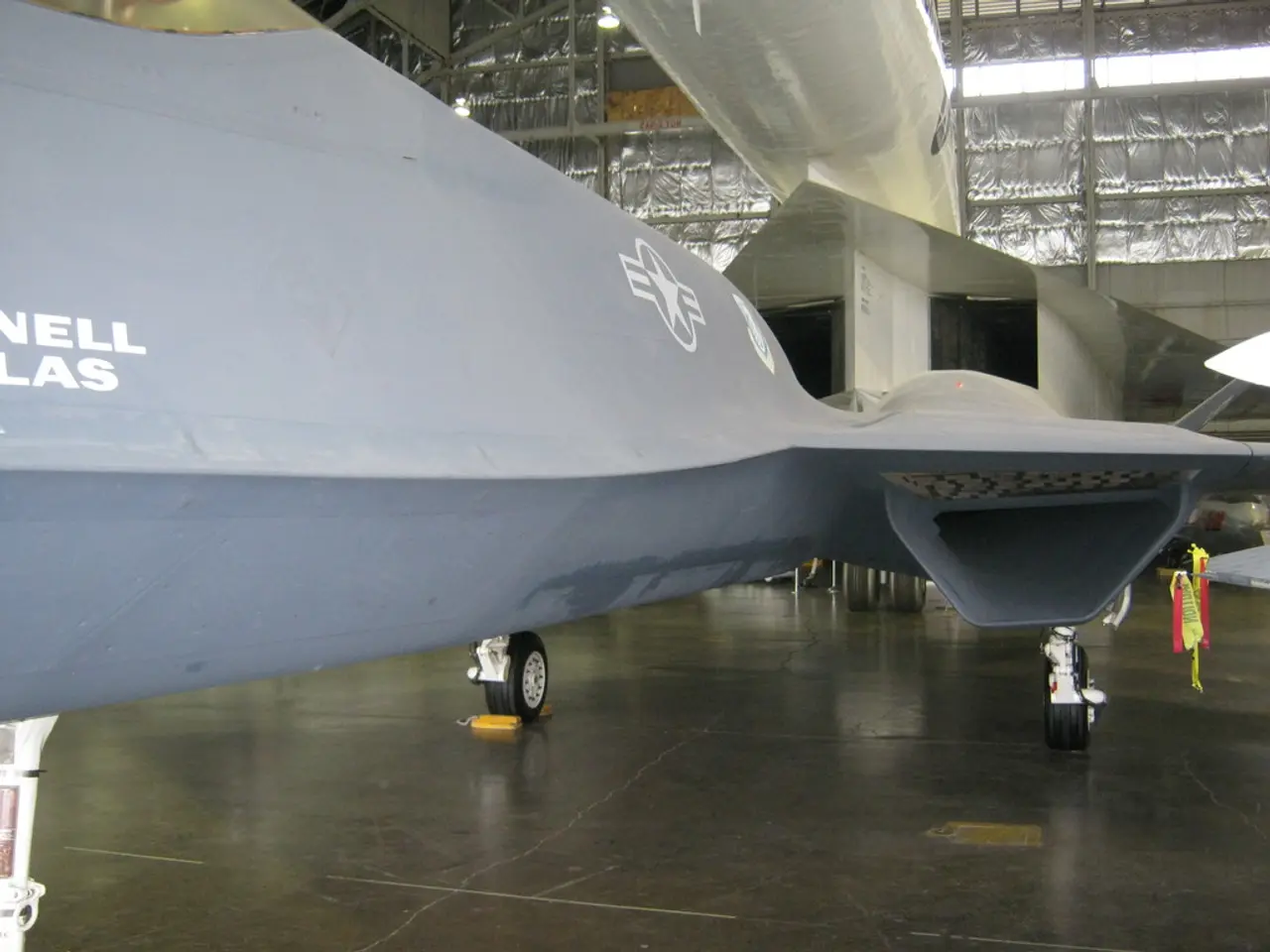Pacific Military Exercise Demonstrates Advanced Aerial Communication Technologies
U.S. Air Force's Mobility Guardian Exercise Enhances Communication and Coordination
The U.S. Air Force is currently conducting the 2025 edition of the Mobility Guardian exercise, a large-scale combat training event focused on improving communication and coordination for rapid force flow and logistics in contested environments.
The exercise is part of the Department-Level Exercise (DLE) series, designed to test and improve the capacity to execute large-scale, rapid deployments of troops and equipment across a vast region spanning more than 3,000 miles. This year, the exercise involves about 85 mobility aircraft and 2,245 Airmen, moving more than 7,000 troops and 5,000 tons of supplies and equipment in just seven days.
One of the key objectives of Mobility Guardian 2025 is to enhance communication, interoperability, and joint integration between military aircraft and allied forces. To achieve this, more than 400 joint and coalition aircraft and over 12,000 personnel are participating across 50+ locations. This large-scale, high-tempo exercise provides a realistic environment where Airmen from the U.S. and partner nations work closely together, employing new operational concepts to build trust, improve deliberate planning, and coordinate defense operations effectively.
The exercise is particularly significant for the Air Force's transport planes, tankers, and ground crews, as it focuses on improving the lack of equipment that allows them to share data without the help of satellites or incompatible software. Congress has approved a larger sum for mobility connectivity as part of a tax-and-spending package, including $116 million for improving connectivity in the C-17 fleet and another $84 million for the same purpose for KC-135s.
About a dozen KC-135 and KC-46 tankers took off from Guam to support six C-17s flying from Alaska to Australia. Eight of these aircraft are equipped with the Airlift Tanker Open Mission Systems kit (ATOMS kit), which allows aircrews to connect to classified and unclassified internet via their electronic flight bags. This kit, known as the ATOMS kit, allows real-time communication between aircraft and ground crews, serving as a lifeline for Airmen flying alone over the Pacific.
Lt. Col. James Vanderneck, who ran a detachment of C-130s flying airlift missions between Guam and nearby islands, credited their wins to a colleague in charge of C-130 flight planning who could keep working while he flew into theater on an ATOMS-equipped tail.
The exercise is not without its challenges, as the timing may not be ideal for some Airmen or aircraft. However, Gen. John Lamontagne, the head of Air Mobility Command, stated that flexibility and communication are key to air power. The Air Force is also shifting to a new force generation model called AFFORGEN, where units go through 24-month cycles broken into six-month phases. This may mean that some Airmen deployed to Guam for the exercise may be there for a month, come home for a few weeks, then deploy again for six months.
The DLE includes multiple smaller, concurrent exercises such as Pacific Air Forces' Resolute Force Pacific and Air Force Special Operation Command's Emerald Warrior. The Air Force sent more than two dozen tankers to Europe three weeks before the joint exercise kicked off, in response to rising tensions.
In conclusion, Mobility Guardian 2025 is a significant exercise for the U.S. Air Force, aimed at improving communication and coordination across large troop movements by integrating multiple branches, allies, and partners into a seamless operation across the Pacific. The exercise focuses on rapid, flexible, and contested environment logistics and combat employment, making it a crucial step towards strengthening the Air Force and its alliances.
[1] Air Force Magazine [2] Defense News [3] Military.com
- The Air Force's Mobility Guardian exercise involves more than 400 joint and coalition aircraft, demonstrating the importance of interoperability and joint integration between military aircraft and allied forces.
- Congress has approved a larger sum for mobility connectivity as part of a tax-and-spending package, recognizing the need for improved data sharing between transport planes, tankers, and ground crews.
- The Airlift Tanker Open Mission Systems kit (ATOMS kit) is instrumental in allowing aircrews to connect to classified and unclassified internet, serving as a lifeline for Airmen flying alone over the Pacific.
- The U.S. Air Force is employing new operational concepts in the Mobility Guardian exercise, aiming to build trust, improve deliberate planning, and coordinate defense operations effectively with partner nations.
- The Air Force is shifting to a new force generation model called AFFORGEN, which may necessitate a month-long deployment for some Airmen participating in the Mobility Guardian exercise, followed by a few weeks at home before another six-month deployment.
- The Mobility Guardian 2025 exercise is crucial not only for the Air Force but also for the industry, finance, and aerospace technology sectors, as it signifies a significant leap towards strengthening the Air Force and its alliances.








